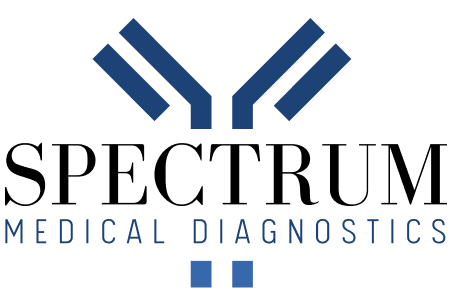As the Canadian government finally came to terms with opioid abuse holding a very real threat to the general population, education on substance abuse lagged behind. Although most of us know of someone that is abusing substances be they legal or illicit, an understanding of what that means and how it affects people throughout Canada is still lacking. Most people are in the dark about how the stigma around substance abuse influences how, where and if someone will seek help for their addictions. With 11 Canadians dying from opioid related issues every day in Canada, it is time we take a closer look at stigmatization and how it is contributing to the problem.
What is Stigma?
Stigma creates unfounded attitudes and beliefs usually directed to a group of people, or social situation. Stigma covers many views, all of which are negative including discrimination, prejudice, judging, labeling, isolating and stereotyping. Because of this unfair judgement, people living with a certain stigma are faced with barriers, especially for those who require health and social services. This poses a serious issue for society as those with substance abuse challenges feel embarrassed to seek assistance even though they recognize they need it.
Stigma and Drug Abuse
Drug users and often their families are exposed to stigma which can lead to feelings of isolation, heightening drug use. The types of stigma associated with drug users include:

- Social stigma which includes negativity towards drug users and their social circle of family and friends.
- Structural stigma from people in public services such as health care providers, first responders and government members who choose to ignore or downplay the impact of substance abuse disorders or worse create social services that add to the stigma associated with drug abuse, making it more difficult.
- Self-stigma which is the internalization of both social and structural stigma directed at one’s self.
The Dangers of Stigma
As we witnessed in the early stages of the opioid crisis, structural stigma creates barriers that make it difficult for those in need to seek attention. This was noticeable both in the social services available as well as health care services. There was also a sense that laws were being used to criminalize addiction instead of offering help to end addiction. The fear of incarceration is a very common reason for abusers to avoid asking for help. In the U.S. the National Center on Addiction and Substance Abuse (CASA) found more than 65 percent of those incarcerated were found to have a substance abuse disorder but treatment was only provided for 11 percent.
As well, interventions required such as needle exchanges, safe drug consumption locations and substitution therapies were frowned upon by officials in a position to help ease the risk. This was in large part due to the population’s belief that these “crutches” would instead encourage use instead of stem the occurrences of opioid related overdoses. In fact, Studies found that nurses held negative views towards drug abusers (Howard & Chung, 2000). This stigma in the healthcare industry makes it very difficult for those with drug dependencies to feel safe to seek treatment.
Stigma can also affect the views of those in trouble which can have a domino effect in their lives preventing them from finding jobs, housing and other basic needs for life. The fear stigma places on drug abusers makes it very difficult to use the health system, even when their health care needs are unrelated to their drug use. Their quality of health care is reduced, and it stops them from seeking treatment programs.
Unfortunately, because stigma is transferred to those in the social circle of users, it can also be very hard on family and friends who might hesitate to seek help for themselves. The stress of living with a loved one on drugs can be very dangerous, yet many choose to suffer in silence due to stigma.
Effects of Stigma
Stigma creates very negative feelings for those being judged which is the main reason they do not seek help. Those feelings can include:
- Fear
- Anger
- Blame
- Shame
- Rejection
- Hopelessness
- Grief
- Distress
- Suicidal
- Isolated
- Devalued
- Lonely
- Loss of Control
How can we Lift Stigma?
This is a large undertaking and much like overcoming any unfair situation based on inequality. It begins by changing attitudes through education and social awareness. Creating a more politically correct approach to discussions about drug abuse can help create a language that is less offensive and more understanding to the impact of drug abuse. Some important first steps include:
- Providing compassionate, non-judgemental support and listening.
- Displaying kindness to those suffering from substance abuse disorders.
- Looking beyond the drug use and getting to know the person instead.
- Educating ourselves and our children on drug dependency.
- Treating people with substance abuse disorders with dignity and respect.
- Avoiding derogatory terms associated with drug use and drug culture.
- Relying on evidence-based facts instead of stigma.
- Protecting and defending those mistreated because of their drug use.
Why it’s Important
Stigma leads to isolation and loneliness for addicts who face discrimination and separation from their social groups. Losing these social ties makes it more difficult for those with substance abuse disorders to find help. Separation from the community can also make drug use far more dangerous when users choose unsafe, hidden locations to consume drugs. It becomes a vicious cycle when loneliness and depression fuel the need for drug use. Many people self-isolate due to self-stigma issues where they view themselves as unworthy of love. They also might feel immoral when using drugs, view themselves as weak and unable to control their urges to use drugs. All of these things affect self-worth and lead to further drug use.
In the United States the economic, social, and medical costs associated with people unable to seek treatment is approximately $510 billion annually (Harwood, 2000). With both the social and economic impact of stigma and drug use, it is important that people change their views on drug addiction and instead look for viable ways to manage and discourage abuse.
If you would like information on our Addiction Rehabilitation Centre screening program tools click here.

